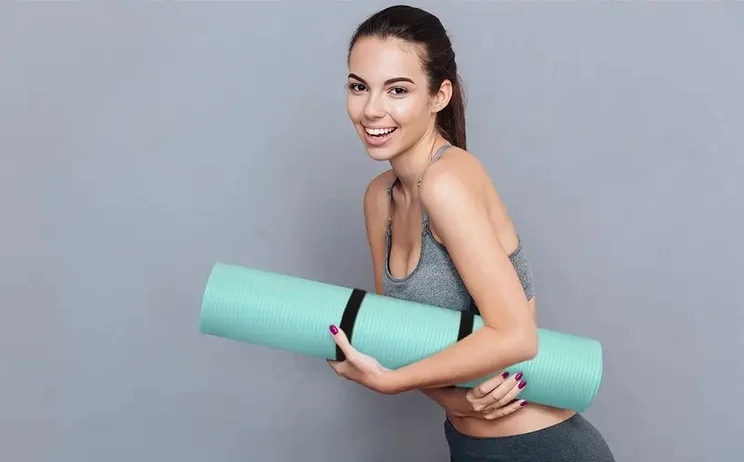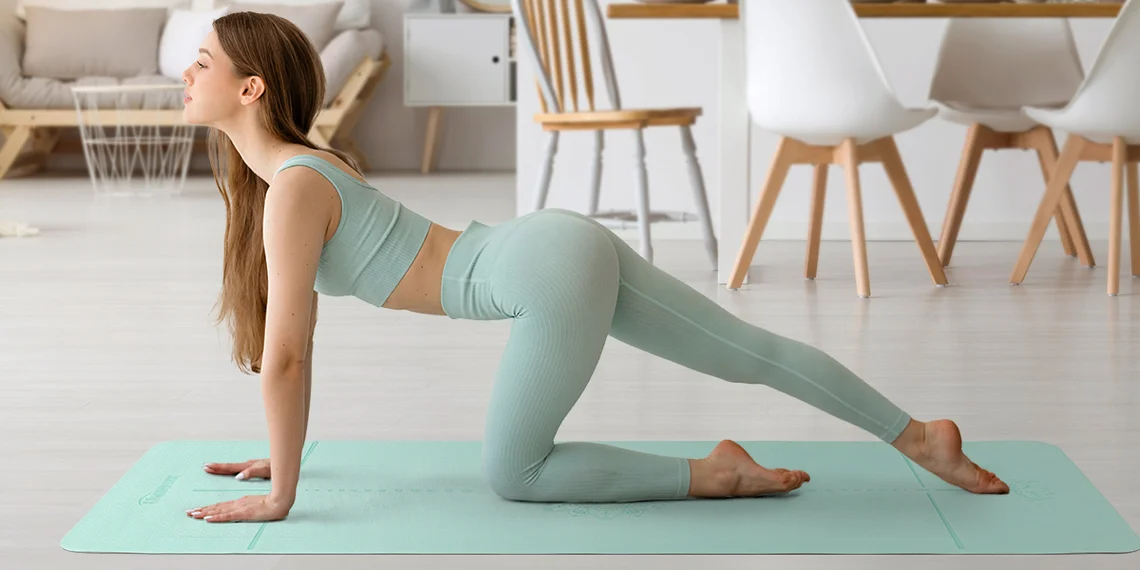For those new to yoga, finding the right yoga mat for beginners can make all the difference in your practice. Yoga is great for your body and mind! It helps you become more flexible and strong, while also reducing stress and helping you focus better. But if you’re just starting out, you might not realize how important your yoga mat is for your practice. The best yoga mats for beginners give you the right amount of softness, grip, and strength to help you learn and improve.

As you embark on your yoga journey, investing in a quality mat is one of the most important decisions you’ll make. A good yoga mat for beginners can help you not slip while doing poses, protect your joints, and keep your body aligned. There are many choices to pick from, whether you want something cheap or something fancy.
1: Understanding Yoga Mats
1.1 What is a Yoga Mat?
A yoga mat is a specially designed exercise surface that provides cushioning, grip, and stability during yoga practice. All-purpose yoga mats are different from regular exercise mats. They are designed to stop you from slipping while doing different yoga poses. These mats are just the right mix of hard and soft to keep you comfortable. They also give you your own space to practice and keep your body warm from the cold floor, especially when you are sitting or lying down.
1.2 Why Beginners Need the Right Mat
For newcomers to yoga, having the right mat is not just a matter of comfort—it’s a matter of safety and learning efficacy. Best mats for yoga practice for beginners provide:
- Enhanced stability: As beginners learn proper alignment and balance, non-slip yoga mats help prevent dangerous falls and injuries.
- Proper support: The right cushioning protects sensitive joints, especially knees, wrists, and spine, allowing beginners to hold poses longer without discomfort.
- Confidence boost: When you’re not worried about slipping or feeling unstable, you can focus on learning proper form and breathing techniques.
- Practice consistency: A comfortable, supportive mat encourages regular practice, which is key to progression in yoga.
Without a proper mat, beginners often struggle with basic poses, develop improper form habits, or may even injure themselves. This can lead to frustration and abandonment of the practice before experiencing its true benefits.
2: Key Features to Look for in a Beginner Yoga Mat
2.1 Material
The material of your yoga mat affects everything from grip to durability to environmental impact:
- PVC (Polyvinyl Chloride): Traditionally the most common material for affordable yoga mats. PVC mats are durable, provide good grip when dry, and come in various price ranges. However, they’re not biodegradable or eco-friendly.
- TPE (Thermoplastic Elastomer): A more environmentally friendly alternative to PVC. TPE mats are lightweight, recyclable, and free from harmful chemicals, making them popular among eco-friendly yoga mats. They typically offer decent grip and cushioning.
- Natural Rubber: These high-quality yoga mats provide excellent grip even during sweaty practices and are made from renewable resources. They tend to be more expensive but offer superior performance and durability. Many rubber mats incorporate jute or cotton for added stability.
- Cork: Antimicrobial and naturally grippy when wet, cork mats are sustainable and biodegradable. They’re ideal for hot yoga as their grip improves with moisture.
- Cotton: Traditional yoga rugs made from cotton are less common but offer a connection to yoga’s roots. They provide less cushioning but excellent grip once broken in.
2.2 Thickness
Yoga mat thickness is measured in millimeters and typically ranges from 1mm to 8mm:
- Thin (1-2mm): Travel mats fall into this category. They offer minimal cushioning but maximum stability for standing poses. Not recommended for beginners or those with sensitive joints.
- Standard (3-5mm): The most versatile thickness, providing a balance between cushioning and stability. A 4mm or 5mm mat is often ideal for beginners, offering enough yoga mat cushion to protect joints while still allowing for stability in standing poses.
- Thick (6-8mm): These high-density yoga mats provide extra cushioning for sensitive joints and are excellent for therapeutic practices. However, they can make balancing poses more challenging and are less portable.
For most beginners, a medium-thickness mat (4-5mm) offers the best compromise between comfort and stability.
2.3 Texture and Grip
One of the most crucial features for beginners is a mat’s texture and grip capability:
- Surface texture: Mats with raised patterns or textured surfaces provide additional traction. The best non-slip yoga mats feature textures that prevent sliding in both dry and sweaty conditions.
- Stickiness: Many PVC mats are designed to be “sticky” when dry, which helps prevent slipping. This feature is particularly important for beginners who are still developing strength and proper alignment.
- Open-cell vs. closed-cell construction: Open-cell mats absorb moisture (including sweat), which can enhance grip during vigorous practice but may harbor bacteria if not cleaned properly. Closed-cell mats resist moisture absorption but may become slippery when wet.
For beginners, a mat with reliable grip under various conditions is essential for safety and confidence.
2.4 Size and Weight
Standard yoga mats are approximately 68 inches (173 cm) long and 24 inches (61 cm) wide, but variations exist:
- Length: Taller practitioners should consider longer mats (72-85 inches) to ensure their entire body fits comfortably, especially during supine poses.
- Width: Standard width works for most people, but those who enjoy more space may prefer wider mats (26-30 inches).
- Weight: Lightweight yoga mat options are typically 2-3 pounds, making them easy to carry to class. Heavier mats (5-7 pounds) tend to be more durable and less likely to bunch up during practice but are less portable.
Beginners attending classes should consider portability, while those practicing exclusively at home might prioritize comfort over weight.
2.5 Eco-friendliness
As yoga philosophy emphasizes respect for nature, many practitioners prefer eco-friendly yoga mats:
- Biodegradable materials: Natural rubber, jute, cotton, and cork mats decompose naturally at the end of their life cycle.
- Recyclable options: Some TPE mats can be recycled when they wear out.
- Production methods: Some manufacturers use non-toxic dyes and sustainable production methods to reduce environmental impact.
- Durability: The most sustainable mat is one that doesn’t need frequent replacement. Durable yoga mats may cost more initially but create less waste over time.
While eco-friendly mats may come with a higher price tag, they align better with yoga’s principles of mindfulness and respect for the earth.
Conclusion
Choosing the best yoga mat for beginners is all about what you like and need. Do you want it to be soft, grippy, easy to carry, or good for the Earth? Whether you choose a budget-friendly option or invest in a premium mat, the right yoga mat for beginners will enhance your experience and help you build a strong foundation for years of beneficial practice.
